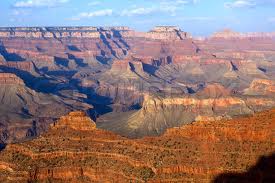|
Covariability of climate and stream flow in the Upper Rio Grande from interannual to interdecadal timescales - PDF Study region: REFERENCE Pascolini-Campbell, M.A., R. Seager, A. Pinson and B.I. Cook, 2017: Covariability of Climate and Upper Rio Grande Streamflow. J. Hydrology: Regional Studies 13, 58-71, doi.org/10.1016/j.ejrh.2017.07.007. ~~~~~~~~~~~~~~~~~~~~~~~~~~~~~~~~~~~~~~~~~~~~~~~~~~~~~~~~~~~~~~~~~~~~~~~~~~~~~~~~~~ Causes of Interannual to Decadal Variability of Gila River Streamflow over the past Century - PDF Study region: The Gila River, New Mexico, is characterized by two peaks in streamflow: one in the winter–spring (December–May), and summer (August–September). The region is influenced both by Pacific SST variability as well as the North American Monsoon. Study focus: The mechanisms responsible for the variability of the winter–spring and summer streamflow peaks are investigated by correlation of streamflow with precipitation and sea surface temperature for 1928–2012. Decadal variability in the flow record is examined for a longer term perspective on Gila River streamflow using tree ring-based reconstructions of the Palmer Drought Severity Index (PDSI) and the Standardized Precipitation Index (SPI). New hydrological insights for the region: Results indicate a strong influence of winter–spring precipitation and Pacific SST anomalies on the winter–spring streamflow, with El Nino˜ conditions in the Pacific causing increased precipitation and streamflow. Decadal Pacific variability helps explain the transition from high winter flow in the late 20th century to lower flows in the most recent decade. The summer streamflow has a somewhat weaker correlation with precipitation and Pacific SST than the winter–spring streamflow. Its variability is more likely influenced by local North American Monsoon precipitation variability. PDSI and SPI reconstructions indicate much more severe and extended periods of droughts and pluvials in past centuries as well as periods of concurrent winter and summer drought. REFERENCE Pascolini-Campbell, M.A., R. Seager, D.S. Gutzler, B.I. Cook and D. Griffin, 2015: Causes of Interannual to Decadal Variability of Gila River Streamflow over the past Century. J. Hydrol. Regional Sys., 3, doi:10.1016/j.ejrh.2015.02.013, 494-508. |
 EASM2: LINKING NEAR-TERM FUTURE CHANGES IN WEATHER AND HYDROCLIMATE IN WESTERN NORTH AMERICA TO ADAPTATION FOR ECOSYSTEM AND WATER MANAGEMENT EASM2: LINKING NEAR-TERM FUTURE CHANGES IN WEATHER AND HYDROCLIMATE IN WESTERN NORTH AMERICA TO ADAPTATION FOR ECOSYSTEM AND WATER MANAGEMENT | |
| Lamont-Doherty Earth Observatory of Columbia University 61 Route 9W Palisades, NY 10964
| |
|
| |